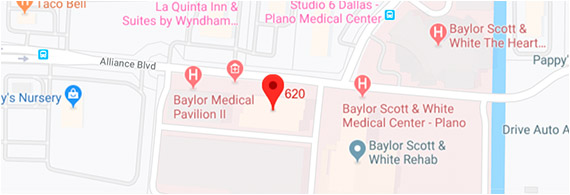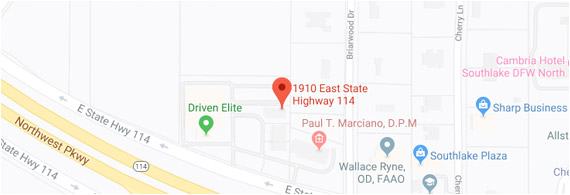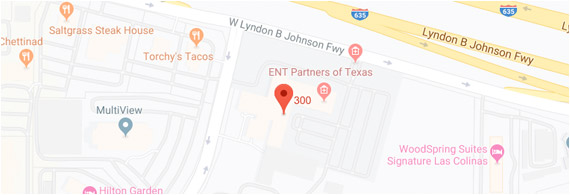What is the difference between Conventional and Custom LASIK?

Healthy eyes and good vision play an important role in how we carry out our daily activities. Being able to see clearly helps us to live comfortably and safely while indoors and outdoors respectively. Unfortunately for some, good vision is something they can’t boast of having. At LaserCare Eye Center, we are dedicated to ensuring that people with poor vision get long-lasting solutions to improve their eyesight and lead normal lives. LASIK eye surgery is one of the refractive procedures that we perform to help patients who struggle with common eyesight problems. If you’ve been looking for a reliable medical facility that performs LASIK procedure in Dallas Texas, we are just one phone call away.
What is LASIK?
Laser Assisted in Situ Keratomileusis (LASIK) is eye surgery that permanently alters the shape of the cornea. It is the most popular refractive procedure used to correct vision problems, including myopia (nearsightedness), hyperopia (farsightedness) and astigmatism (blurred or distorted vision). According to the United States Food & Drug Administration (FDA), approximately 600,000 to 800,000 patients undergo the LASIK procedure annually.
When performing a LASIK procedure, our laser eye surgeon makes a tiny flap in the patient’s cornea and then corrects the shape of the cornea using the laser. He does this with the aim of rectifying the problem in the eye that causes focus difficulties by permitting light to suitably focus on the retina. This procedure is considered a highly effective and safe procedure, and it takes 10-15 minutes to perform for each eye. Patients also take a few days to completely recover after the procedure.
In your quest for better vision, you may have come across the terms custom LASIK and conventional LASIK, and you have probably wondered how they differ. To understand the difference between the two, you need to know what is involved in both of them.
Conventional LASIK
Also referred to as traditional or standard LASIK, conventional LASIK is a corrective eye surgery procedure with average correction throughout the affected eye. This procedure was invented in the 1990s, and it has been an effective treatment for refractive problems such as farsightedness, nearsightedness, and astigmatism. Conventional LASIK uses the same procedures used for the prescription of eye contacts or pair of eyeglasses.
Prior to undergoing the procedure, the doctor performs a refraction on the patient, holding several lenses up to his eye to establish the extent of correction needed. The doctor then uses a femtosecond laser to create a tiny flap in the corneal surface. He then uses an excimer laser to reshape the cornea so that the retina can be able to properly focus light. The surgeon then lays the flap back down and that’s it.
Who are the Perfect Candidates for Conventional LASIK?
We recommend conventional LASIK to:
- Patients with lower order aberrations.
- People who aren’t contented with their overall vision with eyeglasses or contact lenses.
- Patients with normal pupil size measurements
Advantages of Conventional LASIK
- It’s a highly effective procedure for lower vision aberrations i.e. myopia, hyperopia, and astigmatism.
- It’s a very safe procedure.
- It’s painless and presents minimal discomfort.
- It helps patients achieve 20/20 vision
There’s one notable shortcoming with conventional LASIK though. While it’s possible for patients to achieve 20/20 vision through this corrective eye surgery procedure, patients may still experience various visual errors. This is because it’s not always possible to achieve a precise outcome with conventional LASIK. Our surgeons perform conventional LASIK with great precision to ensure that patients who opt for this specific procedure due to one reason or another achieve best results.
Custom LASIK
This is a remarkably effective bladeless procedure that uses a more sophisticated and customized technology (Wavescan technology) to measure the affected eye prior to surgery. The custom Wavescan system directs light into the affected eye, and then the light reflects back into the system. It creates a ‘map’ or optical fine print of the affected eye, and then the computer utilizes the data to fix all the optical aberrations detected. Think of it as a fingerprint of your eye and instead of measurements in .25, the iDesign measures to. The procedure also makes use of a laser to create a flap on the corneal surface, and also to reshape it. The surgeon uses a femtosecond laser to create a tiny flap in the corneal surface. He then uses an excimer laser to reshape the cornea so that the retina can be able to properly focus light. The surgeon then lays the flap back down and that’s it.
Who are the Perfect Candidates for Custom LASIK?
We perform custom LASIK procedure on:
- Patients with either lower order aberrations or higher order aberrations.
- Patients who are looking for the most advanced technology and the best possible results.
- Patients with larger pupil sizes.
Advantages of Custom LASIK
- It’s 100 percent customized to a patient’s specific eye prescription within.
- It’s highly effective in correcting both lower and higher order aberrations.
- Gives patients the chance of having 20/20 vision or better.
- Lowers the possibility of a patient losing his contrast sensibility/visual quality.
- Lowers the possibility of losing best-corrected vision.
- Lowers the possibility of halos and glares after surgery.
- The advanced technology increases accuracy when creating the flap, thus reduces flap complications.
While custom LASIK is a highly effective procedure, it’s however not recommended for everyone. Patients who are considered not to be good candidates for the procedure include those with small-sized pupils, patients with severe astigmatism, severe near-sightedness, and patients who’ve had an inconsistent prescription for less than a year.
Custom LASIK versus Conventional LASIK
With the understanding of what’s involved in both custom LASIK and conventional LASIK, the difference between the two becomes clear. The following are the notable aspects that draw the differences between the two LASIK procedures:
- Technology: In custom LASIK, eye surgeons use the advanced technology of a laser to get precise measurements of the eye.
- Accuracy: Use of technology in custom LASIK makes it a more accurate procedure than conventional LASIK.
- Effectiveness: Custom LASIK is highly effective in treating both lower and higher order aberrations, while conventional LASIK is only effective in treating lower order aberrations.
- Vision Quality: Both LASIK procedures help patients achieve 20/20 vision or better.
- Suitability: The suitability for the two LASIK procedures varies from one patient to another. Custom LASIK may be suitable for certain patients but it may not be suitable for other patients. The same goes for conventional LASIK.
- Cost: The cost of custom LASIK is comparatively higher than that of conventional LASIK.
LASIK vs SMILE Surgery
If you’re considering to correct your , it’s best that you familiarize yourself with LASIK vs SMILE procedures so you can decide which one among the two options is best for you.
Our highly qualified and experienced surgeons are capable of performing both custom LASIK and conventional LASIK in Dallas, Texas. They evaluate each patient so that they choose the most ideal LASIK for them. Besides these two LASIK procedures, our surgeons also advise patients on the other types of laser eye surgery procedures performed in our facility, which include SMILE eye surgery and PRK/LASEK.
What happens during LASIK eye surgery or laser vision correction
Why athletes need to consider laser eye surgery
Contact us today at 214.328.0444 to schedule your LASIK in Dallas at any of our locations.




